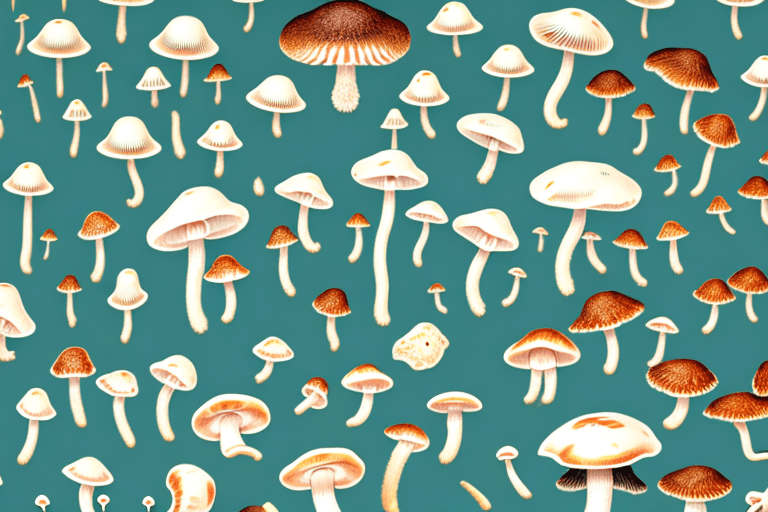The term 'Fruiting Body' is an integral part of understanding the world of functional mushrooms. As the name suggests, a fruiting body is the part of a mushroom that bears the spores, the tiny, usually microscopic particles from which new mushrooms grow. This article will delve into the intricacies of the fruiting body, its role in the life cycle of a mushroom, and its importance in the realm of functional mushrooms.
Functional mushrooms are a category of fungi that have been recognized for their health-promoting properties. These mushrooms, which include varieties like Reishi, Lion's Mane, Chaga, and Shiitake, are used in various forms for their potential benefits to the immune system, cognitive function, and overall wellness. The fruiting body of these mushrooms is often the primary source of these beneficial compounds.
Understanding the Fruiting Body
The fruiting body of a mushroom is the structure that produces and releases spores. This is the part of the mushroom that is most commonly recognized and consumed, often referred to as the 'cap' and 'stem'. However, the fruiting body can take on a variety of shapes and sizes depending on the species of mushroom.
While the fruiting body is the most visible part of a mushroom, it is only a small part of the organism. The majority of a mushroom's life is spent in the growth stage, where it exists as a network of tiny, thread-like cells called mycelium. The mycelium lives within the growth medium, such as soil or wood, absorbing nutrients and growing. When conditions are right, the mycelium develops a fruiting body to reproduce.
The Role of the Fruiting Body in Reproduction
The primary purpose of the fruiting body is to produce and distribute spores, the seeds of the mushroom world. The fruiting body develops specialized structures, such as gills or pores, which generate spores. Once mature, the spores are released into the environment where they can germinate and form a new mycelium network, continuing the life cycle of the mushroom.
Spore production and release is a complex process that involves many changes in the mushroom's physiology. The development of the fruiting body is triggered by environmental factors such as temperature, light, and nutrient availability. The process of spore release is equally intricate, often involving changes in humidity and air currents.
Types of Fruiting Bodies
There is a vast diversity of fruiting body forms in the mushroom kingdom. Some mushrooms, like the common button mushroom, have a simple cap-and-stem structure. Others, like the morel, have a complex, honeycomb-like cap. Some mushrooms don't have a cap at all, instead forming structures like brackets or puffballs.
Despite their differences in appearance, all these forms serve the same purpose: to produce and distribute spores. The variety of forms is a testament to the adaptability of mushrooms and their ability to exploit different ecological niches.
Functional Mushrooms and Fruiting Bodies
The fruiting bodies of functional mushrooms are often rich in bioactive compounds, which are thought to contribute to their health-promoting properties. These compounds can include antioxidants, polysaccharides, and other unique molecules that are not commonly found in other foods.
Many of these beneficial compounds are found in the highest concentrations in the fruiting body, making it the most valuable part of the mushroom from a functional perspective. However, it's important to note that the specific compounds and their concentrations can vary widely between different species of mushrooms, and even between different strains of the same species.
Harvesting and Processing Fruiting Bodies
The harvesting of the fruiting bodies of functional mushrooms is often a delicate process. Many functional mushrooms grow in specific ecological conditions, and care must be taken to ensure that these conditions are preserved. Once harvested, the fruiting bodies are typically dried to prevent decay and to concentrate their beneficial compounds.
Processing of the fruiting bodies can take many forms, depending on the intended use of the mushroom. They can be ground into a powder for use in supplements, brewed into a tea, or even used in cooking. Regardless of the form, the goal is to make the beneficial compounds in the fruiting body as bioavailable as possible.
The Importance of Quality and Sustainability
Given the importance of the fruiting body in functional mushrooms, quality and sustainability are key considerations. Quality refers to the potency and purity of the mushroom and its beneficial compounds. This can be influenced by factors such as the growing conditions, the harvesting process, and the processing methods.
Sustainability is equally important. As demand for functional mushrooms grows, it's crucial to ensure that their harvesting and cultivation practices are sustainable. This includes considerations like preserving natural habitats, minimizing waste, and promoting the health of the mushroom populations.
Conclusion
The fruiting body is a critical part of the mushroom's life cycle, serving as the reproductive organ and the primary source of beneficial compounds in functional mushrooms. Understanding the fruiting body, its role, and its importance can deepen our appreciation for these remarkable organisms and their potential benefits to our health and wellness.
As we continue to explore the world of functional mushrooms, the fruiting body will undoubtedly remain a focal point of research and interest. Its complex structures, diverse forms, and rich array of bioactive compounds make it a fascinating subject of study and a valuable resource for health and wellness.

